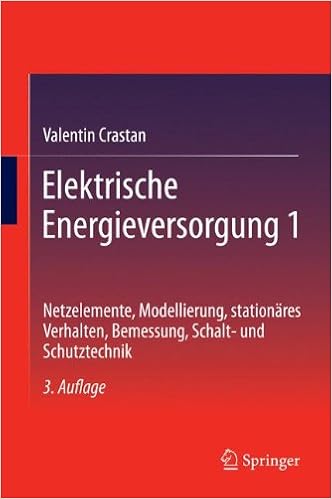
By Robert A. Gabel
Unifies some of the ways used to represent the interplay of signs with structures. Stresses their commonality, and contrasts difference/differential equation versions, convolution, and country variable formulations in featuring non-stop- and discrete-time structures. rework equipment also are mentioned as they relate to corresponding time-domain ideas. This version expands dialogue of purposes of the theoretical fabric in actual difficulties, bettering scholars' skill to narrate this fabric to layout actions. fabric on deconvolution has additionally been extra to the time-domain and transform-domain remedies of discrete-time structures. comprises many examples and equations.
Read Online or Download Signals and Linear Systems PDF
Similar power systems books
Electrical Power Systems Quality
THE DEFINITIVE advisor TO strength QUALITY--UPDATED AND accelerated electricity platforms caliber, 3rd version, is a whole, obtainable, and updated consultant to picking out and fighting the explanations of energy caliber difficulties. the knowledge is gifted with no heavy-duty equations, making it sensible and simply readable for software engineers, commercial engineers, technicians, and kit designers.
Comprehensive River Basin Development: The Tennessee Valley Authority (World Bank Technical Paper)
The Tennessee Valley Authority (TVA) within the usa represents one of many few winning examples of finished river basin improvement. proven to lead the improvement of the assets in the Tennessee River Basin, TVA operates a large choice of water, energy, fiscal improvement, and environmental courses in the quarter.
Das Lehr- und Nachschlagewerk zum elektrischen Energieversorgungsnetz kombiniert theoretische Fundierung mit unmittelbarem Praxisbezug. Der Autor schöpft aus seiner langjährigen Erfahrung auf dem Gebiet der Energieversorgung sowie aus seiner Lehrtätigkeit an Hochschulen in Bern und Biel. Besondere Beachtung finden Methoden zur Modellierung der Dynamik der Netzelemente.
On a world foundation, the improvement of SmartGrids is a constant resolution to the matter of an effective and sustainable supply of electrical power via distribution grids. SmartGrids are a mixture of data and conversation applied sciences and new strength applied sciences. there are numerous various definitions of the concept that of SmartGrids and therefore it sounds as if critical to collect the data to be had from either and study laboratories in a single booklet.
- Power Quality in Electrical Systems
- Control Systems for Power Electronics: A Practical Guide
- Power Electronic Converters Modeling and Control: with Case Studies
- Smart Grids – Fundamentals and Technologies in Electricity Networks
- High Voltage Engineering and Testing
- Rotating Electrical Machines and Power Systems
Additional info for Signals and Linear Systems
Sample text
Unterladen werden und benötigen daher keine aufwendige Elektronik zum Schutz. Mit nur 80 Wh/kg wurde sie von der Li-Ionen Technologie verdrängt und findet lediglich in Hybridfahrzeugen Anwendung. Natrium-Schwefel- und Natrium-Nickel-Chlorid-Akkumulatoren Natrium-Schwefel-Akkumulatoren besitzen eine äquivalente Energiedichte wie Li-Ionen-Akkumulatoren von bis zu 200 Wh/kg und sind wegen der Verwendung von Schwefel sehr günstig in der Herstellung. Jedoch treten bei dieser Technologie im Betrieb hohe thermische Verluste auf, bedingt durch eine notwendige Betriebstemperatur von 250-300°C.
3. auf Seite 53 erläutert. Im Sommer fallen die Reichweitenverluste – z. B. durch die Benutzung der Klimaanlage geringer aus. In dieser Arbeit werden nur die Verluste im Winter betrachtet. 4 Stand der Technik: Vergleich der Effektkriterien aktueller Technologie 21 Betankungsdauer Die Dauer für eine vollständige Aufladung des Li-Ionen-Akkus eines eGolf beträgt nach Angaben von VW 780 Minuten bei einphasiger AC-Ladung per Schuko-Stecker. Per Wallbox ist die Ladeleistung höher, wodurch der Akku innerhalb von 480 Minuten vollständig geladen werden kann [Vgl.
In der letzten Dekade gab es jedoch keine signifikanten signif ikanten Verbess Verbesserungen mehr. Daher wird davon ausgegangen, dass die volumetrische Energi Energiedichte auch zukünftig nicht gesteigert werden kann und, je nach Auslegung, zwischen 350 und 500 Wh/l beträgt. Betankungsdauer (Ladedauer) Die Ladedauer ist abhängig von von der verfügbaren Ladeleistung der Ladestation und den Grenzen der Ladebetriebsbedingungen. Letzteres wird maßgeblich durch die Akku Akku-Zellchemie Zellchemie bestimmt.



